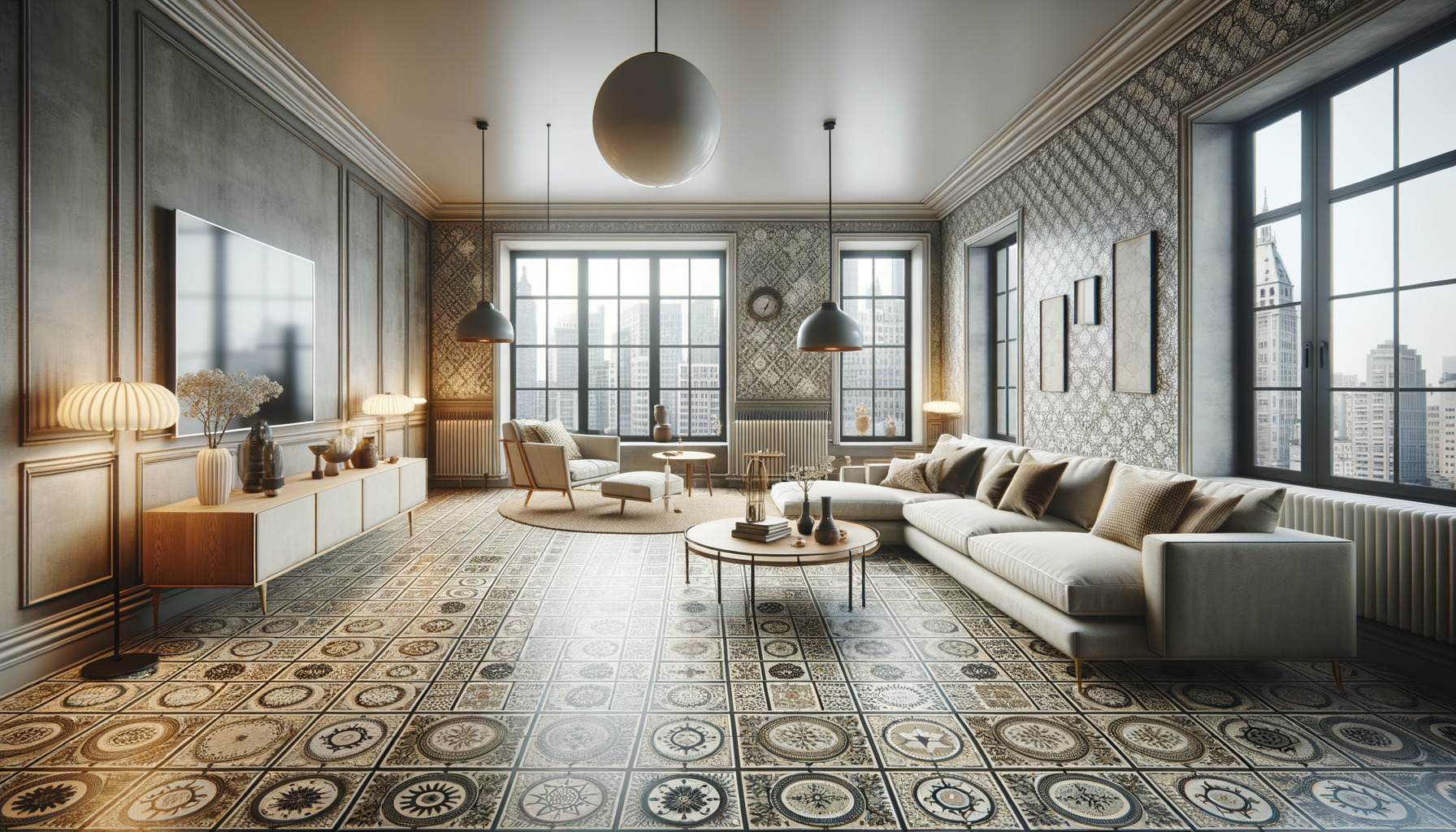The History and Evolution of Linoleum Flooring
Linoleum flooring has a rich history that dates back to the mid-19th century. Invented by Frederick Walton in 1860, linoleum was initially celebrated for its durability and affordability, quickly becoming a staple in both residential and commercial spaces. Made from natural materials like linseed oil, wood flour, and cork dust, linoleum was an eco-friendly option long before sustainability became a global concern.
As the decades passed, linoleum evolved to meet changing aesthetic and functional demands. In the early 20th century, vibrant patterns and colors became popular, allowing linoleum to mimic more expensive flooring options like stone and wood. This adaptability helped it maintain popularity through the years. However, the mid-20th century saw a decline in linoleum’s popularity as synthetic vinyl flooring emerged, offering similar benefits at a lower cost.
Despite this dip, linoleum has experienced a resurgence in recent years, driven by its environmental benefits and retro appeal. As more homeowners and businesses prioritize sustainability, linoleum’s natural composition and biodegradable properties have positioned it as a favored choice for eco-conscious consumers.
The Benefits of Linoleum Flooring
Linoleum flooring offers a multitude of benefits that make it a compelling choice for modern interiors. One of its most significant advantages is its environmental friendliness. Made from renewable resources, linoleum is biodegradable and does not emit harmful volatile organic compounds (VOCs), contributing to healthier indoor air quality.
Durability is another hallmark of linoleum. Known for its resilience, linoleum can withstand heavy foot traffic and resist scratches and dents, making it ideal for high-traffic areas like kitchens and hallways. Its inherent resistance to moisture and stains also makes it a practical choice for bathrooms and laundry rooms.
In addition to its practical benefits, linoleum is celebrated for its aesthetic versatility. Available in a wide range of colors and patterns, it can complement various design styles, from traditional to contemporary. This flexibility allows homeowners to achieve a customized look without compromising on functionality.
- Eco-friendly and sustainable
- Durable and long-lasting
- Moisture and stain-resistant
- Available in diverse styles and colors
Comparing Linoleum to Other Flooring Options
When choosing flooring, it’s essential to compare linoleum with other popular options to understand its unique advantages. Compared to vinyl, linoleum is more environmentally friendly due to its natural composition. While both materials are durable, linoleum tends to have a longer lifespan, often lasting up to 40 years with proper care.
In contrast to hardwood, linoleum offers a more cost-effective solution while still providing a warm, natural appearance. Unlike hardwood, linoleum does not require the same level of maintenance and is less prone to damage from moisture and pests.
Tile flooring is another competitor, known for its durability and variety. However, linoleum offers a softer and warmer underfoot experience, which can be more comfortable in living spaces. Additionally, linoleum’s seamless installation can prevent the accumulation of dirt and grime in grout lines, a common issue with tiled surfaces.
- Linoleum vs. Vinyl: More sustainable and longer-lasting
- Linoleum vs. Hardwood: Cost-effective and low-maintenance
- Linoleum vs. Tile: Comfortable underfoot and seamless installation
Installation and Maintenance Tips for Linoleum Flooring
Installing linoleum flooring requires careful preparation and attention to detail. Before installation, it’s crucial to acclimate the linoleum sheets or tiles to the room’s temperature and humidity to prevent expansion or contraction post-installation. A smooth, clean subfloor is essential for a successful installation, as imperfections can telegraph through the linoleum.
Linoleum can be installed using adhesive or as a floating floor, depending on the specific product and room conditions. Professional installation is often recommended to ensure a flawless finish, especially in large or complex spaces.
Maintenance of linoleum is relatively straightforward, contributing to its appeal. Regular sweeping and damp mopping with a mild cleaner will keep the floor looking fresh. It’s important to avoid harsh chemicals and excessive water, as these can damage the surface. Periodic application of a linoleum-specific polish can enhance its natural luster and protect against wear.
- Acclimate linoleum before installation
- Ensure a smooth, clean subfloor
- Use mild cleaners and avoid excessive water
- Apply polish periodically for maintenance
The Future of Linoleum Flooring in Modern Design
As we look to the future, linoleum flooring is poised to remain a popular choice in modern design, driven by its sustainability and aesthetic versatility. With the growing emphasis on eco-friendly living, linoleum’s natural composition and low environmental impact make it an attractive option for new builds and renovations alike.
Manufacturers continue to innovate, expanding the range of colors, patterns, and textures available in linoleum products. This innovation allows linoleum to keep pace with contemporary design trends, ensuring it remains a relevant and stylish choice for various settings, from homes to commercial spaces.
Moreover, the integration of digital printing technology has opened new possibilities for customization, enabling homeowners and designers to create unique, personalized flooring solutions. As more people recognize the benefits of linoleum, its role in sustainable and stylish interiors is likely to grow, solidifying its place in the future of flooring design.








